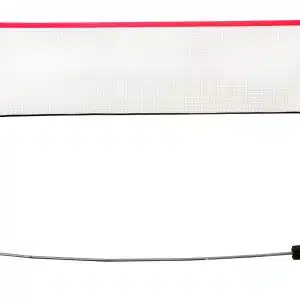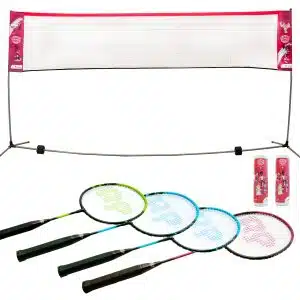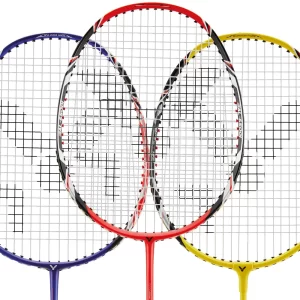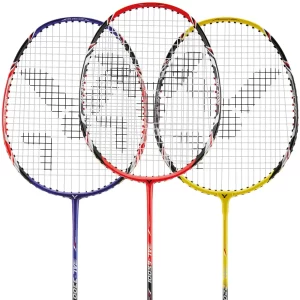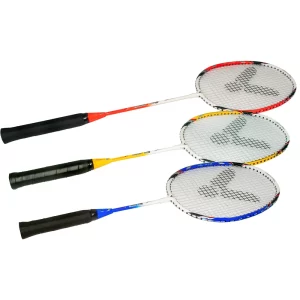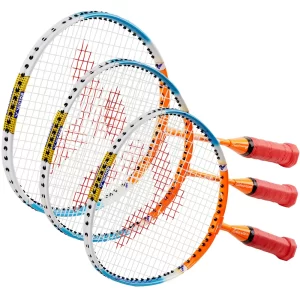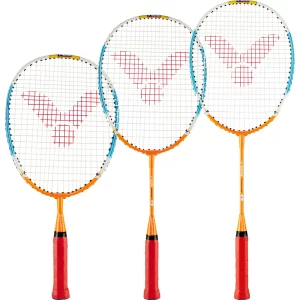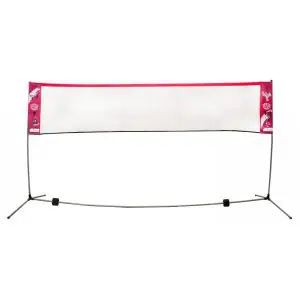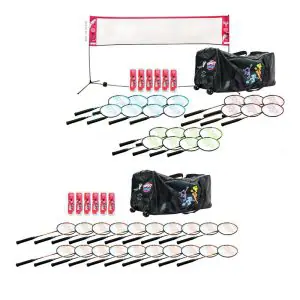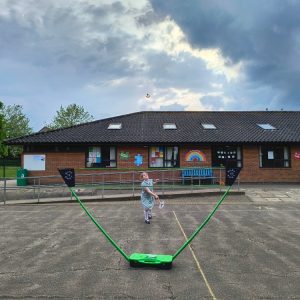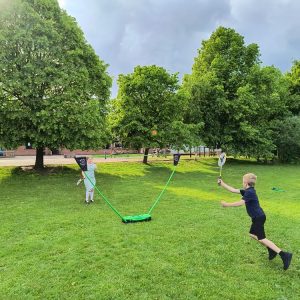Badminton is England’s most popular racket sport. While tennis hogs most of the limelight on TV, it is badminton which takes the gold medal when it comes to the number of participants.’ ‘The unique qualities of badminton make it accessible and enjoyable for anyone and everyone.’
‘Badminton is a popular fast-paced game which can improve balance, co-ordination, agility and speed across all age groups.’
There is an understated quality and appeal to Badminton – but its benefit for your pupils, at primary, secondary or tertiary stage should not be underestimated! Such is its appeal that everything from court sizes, to racket weight, to shuttlecock design have been adapted to suit all ages and abilities – and to match your facility provision, available space and budget.
Traditional and innovative opportunities
With this in mind, ‘Mini Badminton has been designed for junior players and uses a smaller court and lower net to suit the physical size and abilities of children,’ and Badminton England works ‘collaboratively with our partners and stakeholders to provide traditional and innovative opportunities for all to be involved; from primary school programmes to adult social badminton, from clubs to counties, and from our world class coaching development to our major events delivery.’
This inclusive approach is supported by the amount of readily available equipment such as the Sure Shot Quick Fit Set, which has everything contained in a mid-sized box and takes two minutes to assemble, is ideal for enabling a badminton court to be set up in seconds, indoors or out. Equally, the Sure Shot outdoor Badminton Shuttle, developed by the Badminton World Federation, is designed to function effectively outside on grass, sand or playground courts in windy conditions that would end the game for normal, lightweight shuttlecocks.
Can be played in all schools by everyone
Simply put, ‘Badminton is played either by two opposing players, or two opposing pairs. Each player (or team) stands on opposite halves of a rectangular court… and players score points by striking a shuttlecock with their rackets so that it passes over the net and lands in the opponent’s half-court. Each side may strike the shuttlecock only once before it passes over the net. A rally ends once the shuttlecock has hit the floor or a player commits a fault.’
The nature of the game – keeping the shuttlecock in the air, without the need for the ground bounce that Tennis demands – means that it is much easier to set up a game anywhere. Therefore, although Badminton at commercial, match and competitive levels has very set rules, techniques and facility dimensions, it is a game that really can be played in all schools by everyone.
Schools which already have indoor or outdoor Netball, Tennis or Pickleball courts installed can also adopt Badminton more formally by using floor marking tape to show Badminton guidelines or sports facility professionals can also assist to add clear and permanent markings for more serious training and curriculum provision.
However, it is essential to be aware of slip potential and damage to joints that may occur on unsuitable surfaces. Synthetic floors are available that can be laid on top of existing sports hall wooden floors, giving non-slip safety and less impact in falls or dive shots.
Different colours available for flooring too
The inclusive, easy-access quality of Badminton may even result in your school deciding to bring it to the fore with a bespoke court, benefiting core curriculum lessons and as an extra income through evening and weekend community bookings. A true court requires a width of 7.32m (24ft) and a length of 14.63m (48ft) and indoor vertical clearance height of 30ft (9.14m) to prevent ceiling or light damage.
A safety perimeter should also be considered to ensure that enthusiastic, fast-paced shots resulting in player off-court over run do not end in a collision with surrounding walls or other equipment.
There is a variety of different colours available for flooring too; many are green but blue and red are also popular now. If your students do play regularly, or your school hires out the court for commercial benefit, you will need to ensure the glare on the surface is reduced to a minimum for optimal vision. Furthermore, it is advisable to think about surrounding wall colour – darker walls can make it easier to see the shuttlecock and line markings must be clearly distinguishable against the flooring.
Consult other schools
If a ‘homegrown’ court is not an option, then it is well worth researching courts that are available in your local area and league tables or inter-school competitions to engage your students. ‘All you need to do is search out nearby badminton courts and in no time you will have a host of potential court options. If there are two of you who are skilled in the sport, you’re good to go ahead and simply hire a Badminton Court in your area.’
For students who really take to Badminton and wish to take it further, it could also be a good idea to consult other schools that specialise in this sport and universities that support players showing particular skill to enhance your students’ opportunities.
A professional play shuttlecock comprises 16 overlapping, goose or duck feathers from the left wing, each being 70mm in length, embedded into a rounded cork base covered with soft leather. The conical shape of a shuttlecock allows it to flip on impact. As a light and extended particle, it flies with a pure drag trajectory.
Shuttlecocks are usually classified in two categories, namely plastic and feathered. The playing characteristics of plastics and feathers are substantially different. Plastics fly more slowly on initial impact, but slow down less towards the end of their flight. While feathers tend to drop straight down on a clear shot, plastics never quite return to a straight drop, falling more on a diagonal.
With the same initial angle and velocity, the range is larger for plastic than for feathered shuttlecocks. This increase is about one meter, which represents 10% of the total range. This phenomenon is observed on a large variety of plastic and feathered shuttlecocks.
Players carefully choose shuttlecocks as a function of skills and atmospheric conditions. Experienced players prefer shuttlecocks submitted to a slightly larger drag, such as feathered ones, in order to hit them violently without exiting the court. The difference in rotating speed between the two kinds of shuttlecock (plastic and feathered) also plays a role in this choice since a faster rotation of feather projectile limits its precession.
Badminton players always test shuttlecocks before competitions. They hit the projectile with a maximum strength from one extremity of the court. Only projectiles reaching the corridor on the opposite side are selected for the game. This test selects shuttlecocks which are appropriate to the current atmospheric conditions, and it proves that air temperature and humidity influence the trajectory.
This study proves that the shuttlecock aerodynamic length and its range increase with air temperature. Players usually counterbalance this effect by using lighter shuttlecocks when air is hotter.
Feather shuttles need to be properly humidified for at least 4 hours prior to play in order to fly the correct distance at the proper speed and to last longer.
When the shuttlecock is struck by the racket, the formula for how long it takes to stabilise back to its pure drag aerodynamic trajectory is:
The geometry of commercial shuttlecocks is empirically chosen to minimize flipping and stabilizing times… badminton players try to delay stabilization with net drops, in order to prevent the opponent from hitting the projectile correctly.
Since the projectile flight is affected by the wind, competitive badminton is played indoors…with typical Olympic games lasting about one hour (20 min by set) and each rally lasting on average10 seconds with 10 exchanges and a top speed of up to 137 m s−1
Information selected from here.
When the shuttlecock is struck by the racket, the formula for how long it takes to stabilise back to its pure drag aerodynamic trajectory is:


